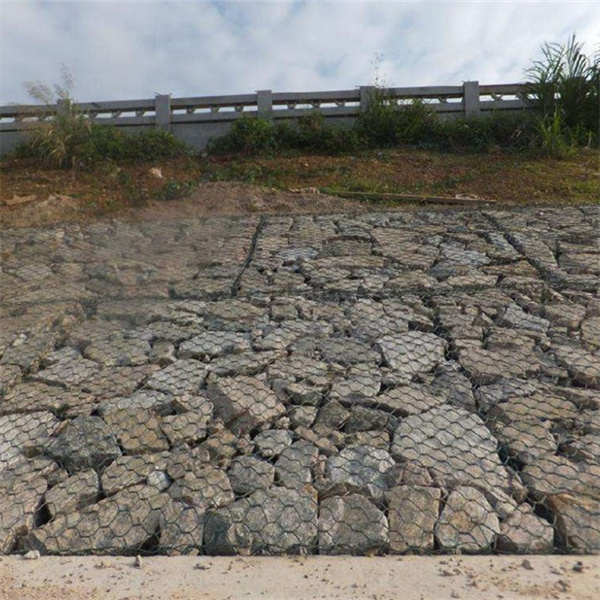Agosti . 07, 2024 21:45 Back to list
Innovative Wood Gabion Wall Designs for Sustainable Landscaping and Structural Solutions in Modern Architecture
The Appeal of Wood Gabion Walls
In the realm of landscaping and structural design, gabion walls have emerged as an innovative solution combining both functionality and aesthetic appeal. Traditionally, gabions consist of wire cages filled with rocks or stones. However, a rising trend involves integrating wooden elements, leading to the development of what we refer to as wood gabion walls. This approach not only enhances the structural integrity of these walls but also provides a unique rustic charm that appeals to various design sensibilities.
What are Wood Gabion Walls?
Wood gabion walls are essentially steel or wire cages that are filled not just with traditional stones but also with untreated or treated wood. These structures serve various purposes such as erosion control, retaining walls, decorative garden elements, or noise barriers. The juxtaposition of wood and stone creates a visually striking effect that can complement both natural landscapes and modern architecture.
The Benefits of Wood Gabion Walls
1. Environmental Benefits One of the major advantages of using wood gabion walls is their eco-friendliness. Wood is a renewable resource, especially when sourced sustainably. By incorporating local timber and natural stone, these walls minimize the carbon footprint associated with transportation and production. They also encourage biodiversity by providing habitats for small wildlife and insects.
2. Aesthetic Versatility The natural look of wood combined with the ruggedness of stone creates a versatile design element that can blend seamlessly into various settings. Whether it's a modern urban garden or a rustic countryside home, wood gabion walls can add texture and depth to outdoor spaces. The ability to customize the wood type and stone size allows for creativity in design, making each installation unique.
3. Structural Stability When properly designed and constructed, wood gabion walls offer excellent structural stability. The weight of the stones helps to anchor the wall, while the wood adds both strength and flexibility. This combination can effectively withstand environmental pressures such as soil movement and erosion, making them a reliable choice in areas prone to land degradation.
wood gabion wall

4. Cost-Effectiveness Compared to traditional retaining walls made of poured concrete or stone masonry, wood gabion walls can be more cost-effective. The materials used can often be sourced locally, reducing transportation costs. Additionally, the DIY nature of building gabion walls allows homeowners to minimize labor expenses by constructing them themselves.
5. Drainage Improvement One of the practical aspects of gabion walls, including wood variations, is their inherent drainage capability. The open structure allows water to flow through, reducing the buildup of pressure that can lead to failure in solid walls. This characteristic is especially beneficial for managing stormwater runoff and preventing erosion.
Construction and Maintenance
Building a wood gabion wall involves several key steps. First, sturdy wire cages are constructed or purchased. These cages are then filled with a mixture of stones and wood, which can be layered for visual interest. The design can range from simple, straight walls to more complex formations with curves and decorative patterns.
Maintenance is relatively straightforward. Regular inspection for structural integrity and signs of decay, particularly in the wood, is crucial. Depending on the wood treatment, occasional resealing or replacing of rotting wood may be necessary to preserve the wall's appearance and strength.
Conclusion
Wood gabion walls are more than just functional structures; they represent a blend of nature and design. Their versatility, environmental benefits, and aesthetic appeal make them an increasingly popular choice for landscaping projects. Whether you are looking for an eco-friendly option to manage erosion or simply wish to add a unique element to your garden, wood gabion walls are certainly worth considering. The combination of wood and stone not only provides utility but also contributes to a harmonious relationship between built environments and the natural world.
-
The Role of Galvanized Gabion Mesh in Riverbank Protection
NewsJun.26,2025
-
The Role of Gabion Basket Raised Bed in Sustainable Gardening
NewsJun.26,2025
-
Quality Assurance of Wire Mesh Gabion Baskets
NewsJun.26,2025
-
Installation Guide for Welded Gabion Box
NewsJun.26,2025
-
How to Choose the Right Gabion Box
NewsJun.26,2025
-
Different Types of Gabion Wire Mesh
NewsJun.26,2025
-
Why PVC Coated Gabion Mattress Is the Best Solution for Long-Term Erosion Control
NewsMay.23,2025






